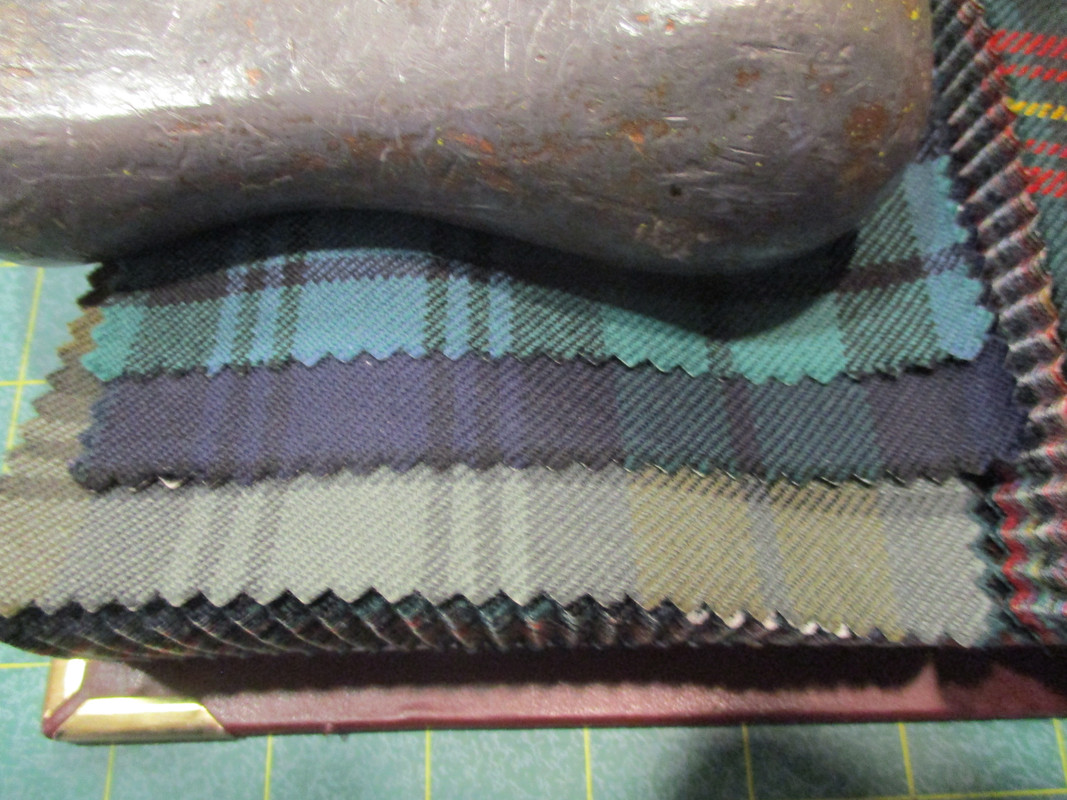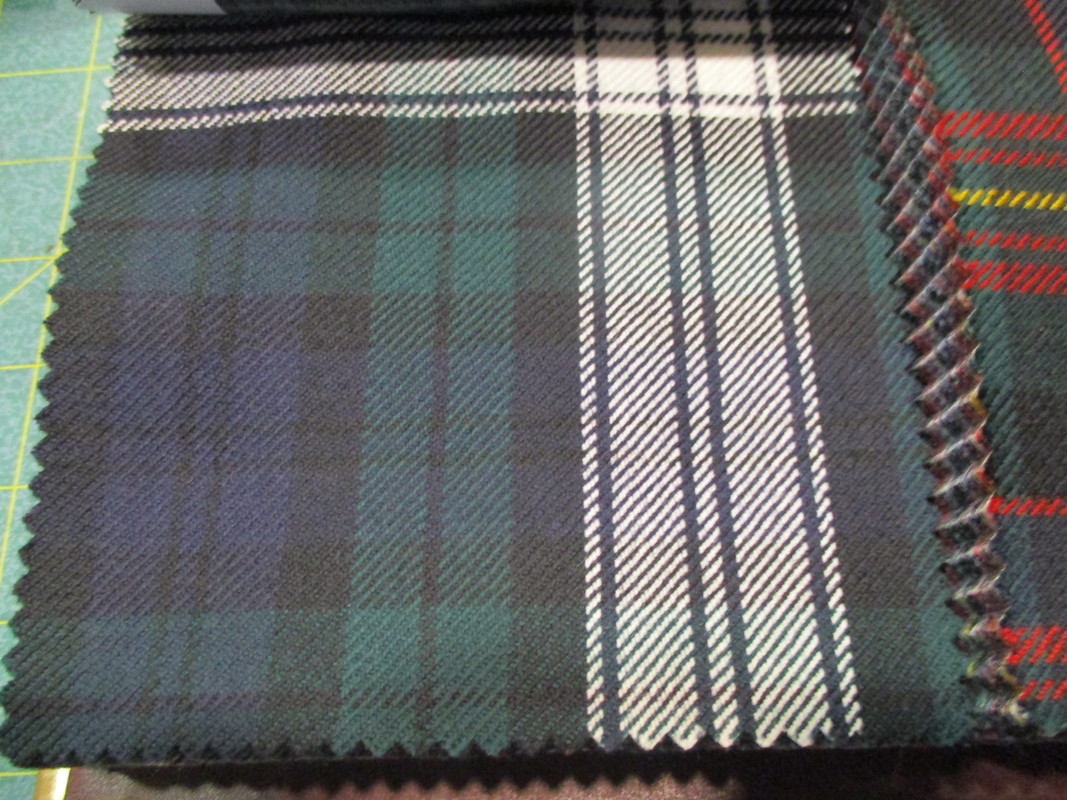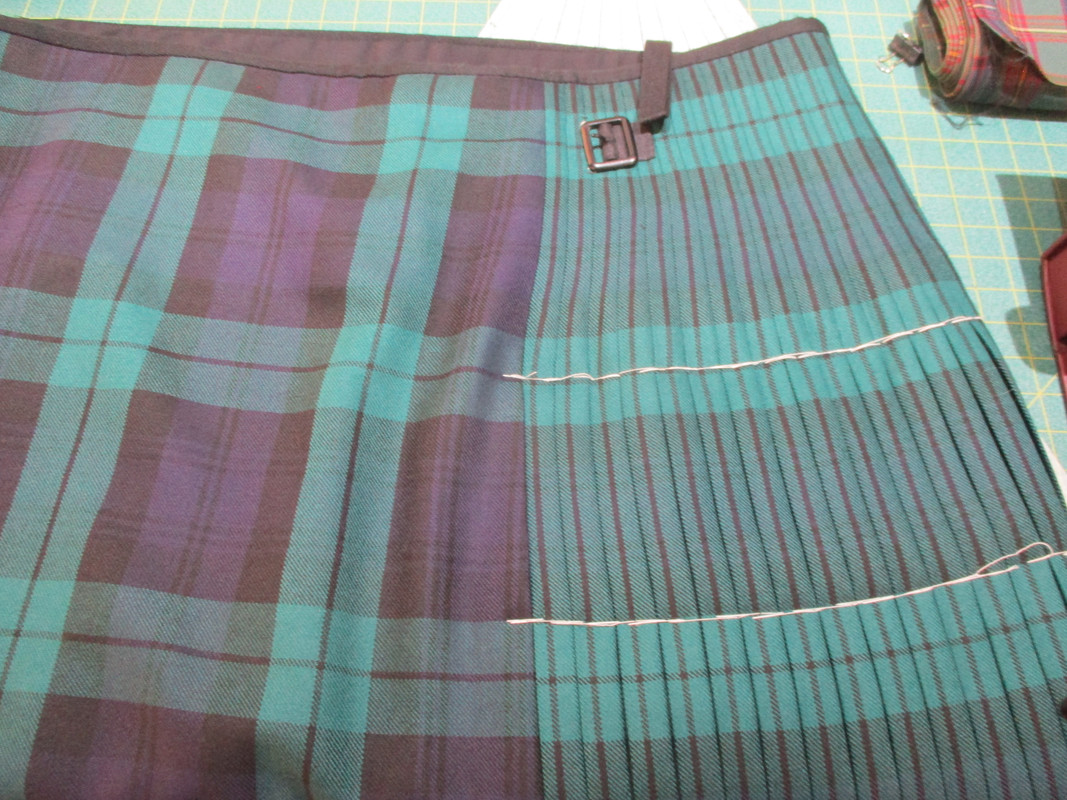|
-
23rd September 19, 03:56 PM
#1
 Originally Posted by Benning Boy

Doesn't the tartan of the 42nd rough kilt answer the question. Im not sure all i know is as i read the thread that tartan comes to mind, thanks to youn Figheadair. I still haven't had a kilt made of the length i bought from you, but i find it attractive on the kilt closet shelf.
Do you mean Wilson’s “Coarse Kilt”? If so, would you be interested in a sell/trade?
-
-
23rd September 19, 05:51 PM
#2
 Originally Posted by davidlpope

Do you mean Wilson’s “Coarse Kilt”? If so, would you be interested in a sell/trade?
Ues, coarse kilt is what i meant. The tartan is lighter blue and green, more of a sky blue and mossey green, and the black stripes are very easy to discern. It is just the opposite of the almost black government sett offered today.
I'm not interested in selling what I have. When I loose enogh more pounds im going to have made into a kilt.
-
-
25th September 19, 03:12 AM
#3
In the 1750's issue plaids just came in the 3 grades, Privates, Sergeants and officers grade. It was all plaiding, unlike later where there was kilting and plaiding issued.
Each soldier got 12 yards of plaiding every 2 years. It is my opinion that half of the 12 yards was issued out the first year and made into what we call a "Great Kilt" today, it was just called a plaid then. After the first year, the worn out plaid was made into a kilt and sometimes hose, and the 2d half of the bi-annual issue went to the solder to make a new plaid.
There is an instance in the 42nd, late 1750's where the plaids were worn out, new tartan had not arrived, and a course tartan was purchased from a merchant in New York as a stop gap till the new uniforms and tartan arrived. Today outside of any military base there are stores that cater to soldiers. Sometimes selling "Surplus" but often times stocking items that are almost as good as issue, not not quite. It was the same in the period, Merchants stocked things that soldiers might need. Rogers Rangers were able to purchase bonnets that most likely were ordered not for them, but to have in stock for the Highland Regiments in NY. The coarse plaid was the same sort of thing.
As to the colours.

This is Lochannon Strome Weight Ancient Black Watch in this photo.

This was a great kilt I made from a special Order 2 years ago, It was pretty good colorwise, but the selvages were not perfect. Waiting on another special run that the colors are better matched to the Waistcoat back that Peter spoke of, and with Herringbone selvage.
-
The Following 2 Users say 'Aye' to Luke MacGillie For This Useful Post:
-
25th September 19, 11:04 AM
#4
 Originally Posted by Luke MacGillie

In the 1750's issue plaids just came in the 3 grades, Privates, Sergeants and officers grade. It was all plaiding, unlike later where there was kilting and plaiding issued.
Each soldier got 12 yards of plaiding every 2 years. It is my opinion that half of the 12 yards was issued out the first year and made into what we call a "Great Kilt" today, it was just called a plaid then. After the first year, the worn out plaid was made into a kilt and sometimes hose, and the 2d half of the bi-annual issue went to the solder to make a new plaid.
There is an instance in the 42nd, late 1750's where the plaids were worn out, new tartan had not arrived, and a course tartan was purchased from a merchant in New York as a stop gap till the new uniforms and tartan arrived. Today outside of any military base there are stores that cater to soldiers. Sometimes selling "Surplus" but often times stocking items that are almost as good as issue, not not quite. It was the same in the period, Merchants stocked things that soldiers might need. Rogers Rangers were able to purchase bonnets that most likely were ordered not for them, but to have in stock for the Highland Regiments in NY. The coarse plaid was the same sort of thing.
As to the colours.

This is Lochannon Strome Weight Ancient Black Watch in this photo.

This was a great kilt I made from a special Order 2 years ago, It was pretty good colorwise, but the selvages were not perfect. Waiting on another special run that the colors are better matched to the Waistcoat back that Peter spoke of, and with Herringbone selvage.
Most of the information (80%) aforementioned in your post is exactly the information i have read in some of the reference material piled up beside my desk. i figure if i know you're 80% correct, odds are good the other 20% should be just as accurate. Thank you for the information.
My understanding is the regiments received new kit every year to replace half of their issue kit, ie. new something every other year. When the old kilts were replaced, some of the material became a little kilt the soldier would use as work dress; maintenance and improvements around the fort battlements, foraging/collecting firewood and the like. If the older jackets were still in good condition, they became waistcoats. Many of the officers kept their older kit with braiding and rank removed to wear during patrols. And when the regiments received new tartan cloth to replace their kilts, some of the new material was also used to make hose. However i also read that in the first winter after the British had defeated the French and taken Quebec City, many British regiments had no re-supply before the winter and some nuns residing at the fort knitted wool socks for soldiers of the 78th Regt. But i'm almost certain the method of knitting today is different than it was in the 18th century.
i wonder at what point did the British Army or the individual regiments decide to regulate the sett, pattern, colour, shade of the BW kilt?
Thanks again
Jacques
Last edited by Jacques; 25th September 19 at 11:09 AM.
Reason: poor grammar
"I know of no inspiration to be got from trousers."
Lt. Col. Norman MacLeod, QOCH, c. 1924
-
-
25th September 19, 12:15 PM
#5
The Tartan was first approved by the Regimental Commander, but also had to be approved by the Army Clothing Board of General Officers who reviewed the sealed patterns of each regiment or augmentation to a regiment upon raising, and then every so often.
From Surviving logistics documents, We know the 77th Regiment had tartan that was exactly the same as 42nd, just with only one Herringbone selvage.
Just my opinion here:
1740's you had a transition from a red/yellow based tartan by the 42nd into the pattern we know today. The 64th Regiment added overstripes to their tartan to differenciate it from the 42nd.
1750;s and 60's everyone is wearing The Govt Sett/Blackwatch/Campbell. Perhaps with shade variations, perhaps not, but overstripes do not seem to be a thing.
By the 1770's and into the 80's the wheels come off and Commanders are adding overstripes, putting musicians in different tartans, its complete chaos! :-)
-
The Following 2 Users say 'Aye' to Luke MacGillie For This Useful Post:
-
25th September 19, 01:59 PM
#6
 Originally Posted by Luke MacGillie

From Surviving logistics documents, We know the 77th Regiment had tartan that was exactly the same as 42nd, just with only one Herringbone selvage.
I can't see how a joined plaid could have only one herringbone selvedge?
1740's you had a transition from a red/yellow based tartan by the 42nd into the pattern we know today.
I don't believe that the 42nd ever wore such a tartan.
-
The Following 2 Users say 'Aye' to figheadair For This Useful Post:
-
25th September 19, 02:38 PM
#7
Terminology again.
We must be careful to remember that the words used today cannot be assumed to be the same as the words used previously.
For example one weaver today uses the terms, Modern, Ancient, and Weathered for the same design in different colors.

These are all the Black Watch Tartan.
Then there is the Dress versions of some designs which simply replace one of the background colors with White which creates a lighter, more feminine look. This is for ladies dresses and is not meant to be 'dressier'.

Today this is the RRS Black Watch.

Which is quite different from what some think of as Black Watch which give an almost totally black or dark appearance.

Each weaving mill has their own dye lots and colors. Some are unique to that mill and are often quite a bit different from some others.
I was speaking to one well known weaver who when asked why a particular shade of green was used in one of his designs, commented that when he originally envisioned and designed the Tartan, it used a light green shade, about like the shade of leaves in spring. But one day he got a large rush order for fabric in his design but was out of yarn in the light green shade. So he simply substituted a yarn dyed in a darker green shade. This darker shade is now thought of as the normal shade for the design. Every mill that weaves the Tartan today use the dark green. Even though it is not what he originally designed.
-
The Following 3 Users say 'Aye' to Steve Ashton For This Useful Post:
-
28th September 19, 03:25 AM
#8
 Originally Posted by figheadair

I can't see how a joined plaid could have only one herringbone selvedge?
I don't believe that the 42nd ever wore such a tartan.
Peter, Im obviously not a weaver, only going off the surviving papers. What is your interpretation of one selvage twilled?

As to the red/yellow tartan, when the only place I saw it was in the Mutineer colured engravings I dismissed it as artistic licence. When I saw it in this painting, It changed my mind. Little details like how one of the figures is in diced hose, the other tartan hose, it changed my mind.
https://www.rct.uk/collection/405954...and-the-mall-0
I would love to perhaps find some surviving papers from Col Crawford to see if there are any surviving regimental papers, but I have not had any luck.
-
The Following User Says 'Aye' to Luke MacGillie For This Useful Post:
 Posting Permissions
Posting Permissions
- You may not post new threads
- You may not post replies
- You may not post attachments
- You may not edit your posts
-
Forum Rules
|
|
Bookmarks